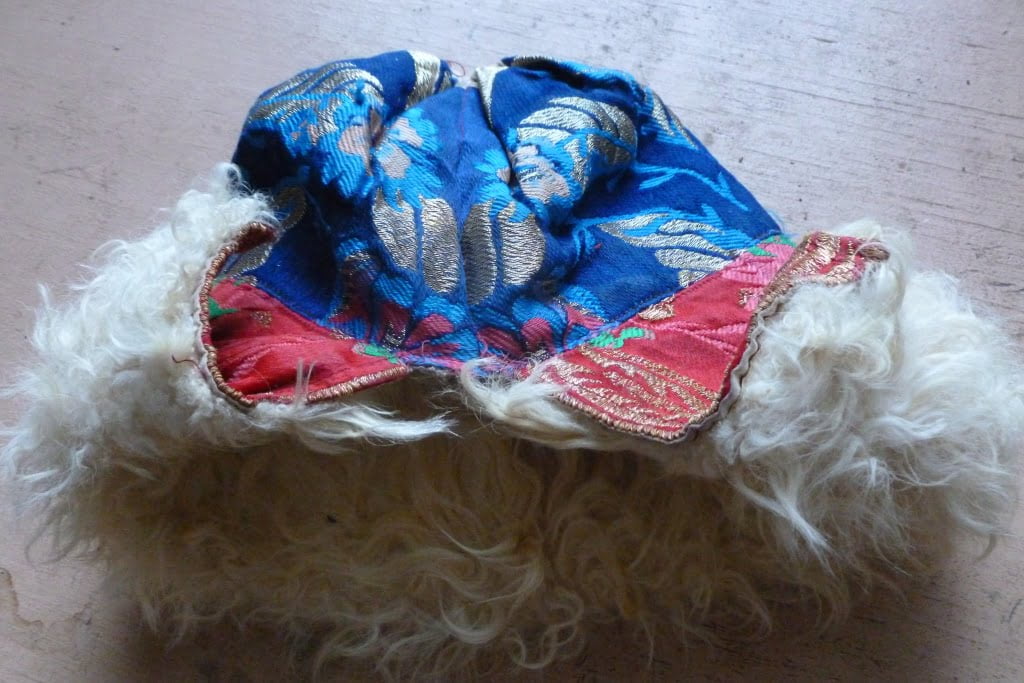a hat story
Once upon a time, I visited the Roof of the World. It was a long flight. The airplane flew all the way up, then seemed to come only half way down, and there we were, in Lhasa.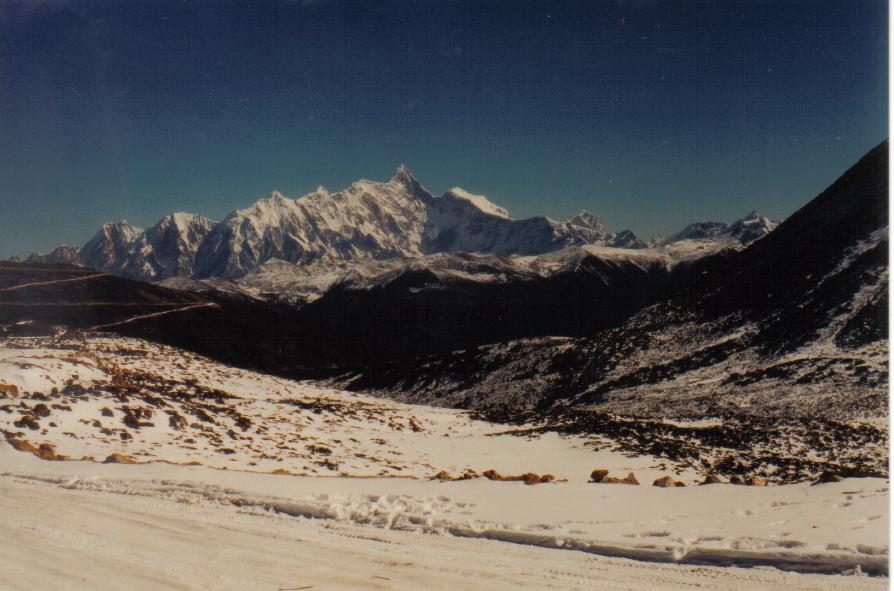
This time of year, I think about Tibet often. It was this time of year, something like thirteen years ago, that I was there. On years when it’s really balmy here I don’t remember so much, but when there are sustained cold snaps and dry snows, it all comes rushing back to me.
It is very cold and dry up there, just the opposite of my native land. I was ill-prepared for the cold, and immediately began to observe the native methods of keeping warm. First observation: almost everyone has something to wear on their heads, when the need arises.

I love hats. I’ve worn many different kinds, literally and figuratively, in my life. I enjoy the element of “dress up”, and since I have hair that flattens into nothing, I like hats that I can keep wearing for fun and good looks, too (to hide my hat-head).
Tibetan hats are diverse. There are basic knit toques and scarf-like textiles, sometimes worn in an unusual way, just folded over and laid on the crown of the head. And then there hats distinct to each region. Walking around Lhasa, I saw so many shapes, sizes, and styles of hats. It was mind boggling. One day, a co-worker and I followed a man who had an entire fox skin wrapped around his head, just to get a better look. It was a pretty unusual hat. I wasn’t particularly interested in wearing a fox skin around my head, but I wanted to see how he had done it. Before we knew it, there were a dozen tall Tibetan men, holding out fox skins in various stages of hat-readiness, for our perusal. We maintained cordiality and quickly extracted ourselves from that alley of the market.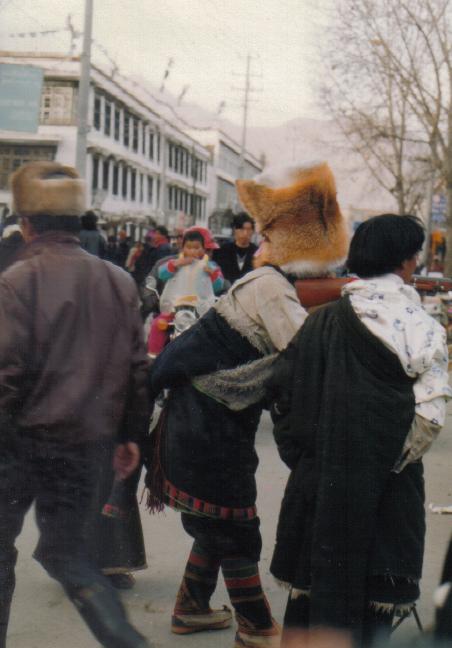
I had a good hat for that trip. And I still wear it to this day. It’s all wool and very colorful, but as I traveled and looked around, I found the native Tibetan hat that looked best for me. Not too tall or stiff. Practical and even versatile. When the fur is turned down, it’s like a very warm sunbonnet. I set my sights to buy one before I returned to the US. It took longer than I thought.
There are lots of shops in Lhasa. Around the main drag of the old city there are an abundance of tailors making beautiful brocades, heavy coats, and chubas, fancy dress shops, and innumerable stalls and closets of everyday wares sold by Tibetans and Chinese merchants, all eager for your business. I could find my hat NOWHERE. Turns out, it comes from the wilds of Eastern Tibet, an area populated by folks who tend to be nomadic. These folks don’t live in Lhasa. They come once a year on pilgrimage and trade missions. They don’t set up shop.
So, I needed a different plan, if I wanted my hat. I couldn’t just shop for it. Our work was nearly done, visas about to expire, and I didn’t have time to commission one from the tailor my boss liked.
Tibetans are, by and large, lovely, open, and expressive people. I was pleasantly surprised by how many conversations I had with local folks without sharing much more than a couple words in a common tongue. Of course, the peddlers in the market stalls tend to know a little more English than the average nomad. I was going to have to strike up one of those more creative “conversations” to accomplish my goal.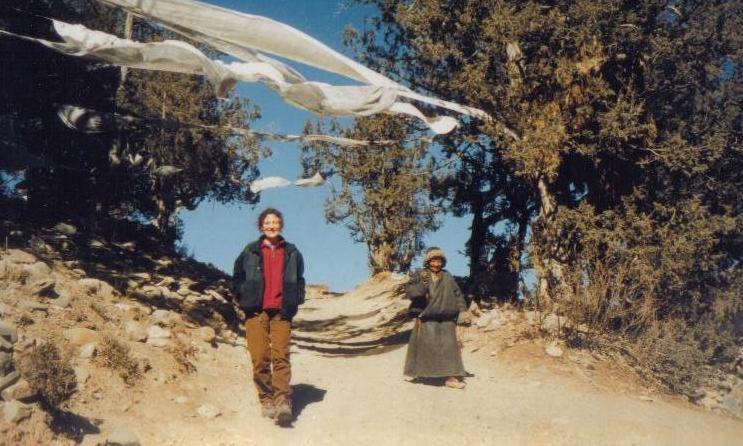
- sweet little old woman to share a stroll with. notice her fine hat…
Since I couldn’t buy one of these in a store, I had no idea how much to offer for one of these hats. I hit the streets with a nice amount of cash in hand, looking for THE hat. I was beginning to think that the entire population of Eastern Tibet had heard about some weather moving in and decided to head for home when I saw a nomadic woman shopping for shoes with her family at a Chinese stall just beyond the Barkhor Square. She was wearing one of the hats. I approached her, greeted her politely, and tried to indicate with hand motions and frequent references to the cash in my fingers, that I would like to trade the cash for her hat. Evidently, I wasn’t doing a very good job, because she was just staring at me with a perplexed look. She seemed to wonder what was wrong with this funny white girl who kept waving money around.
The man trying to sell her shoes understood what I was up to and was glad to help. He explained to her, with great volume and gesticulation, that I wanted to give her money for her hat. She looked at the cash in my hand, gasped, laughed, and fairly threw her hat at me. She took the money and we bowed to each other, giggling. I wore the hat for her, just for a moment, and then we were both on our way.
My co-workers were quick to point out that I could easily add all kinds of new and strange fauna to my scalp by wearing a nomad’s hat, so I wrapped my new treasure in a couple ubiquitous plastic bags and tucked it into my duffel. It stayed there as I traveled to Nepal, Moloka’i, Kaua’i, and San Francisco.
It was Spring when I returned to Tennessee. The woman at the local dry cleaning shop gave me about as strange a look as the Tibetan woman when I handed her my hat for a thorough cleaning.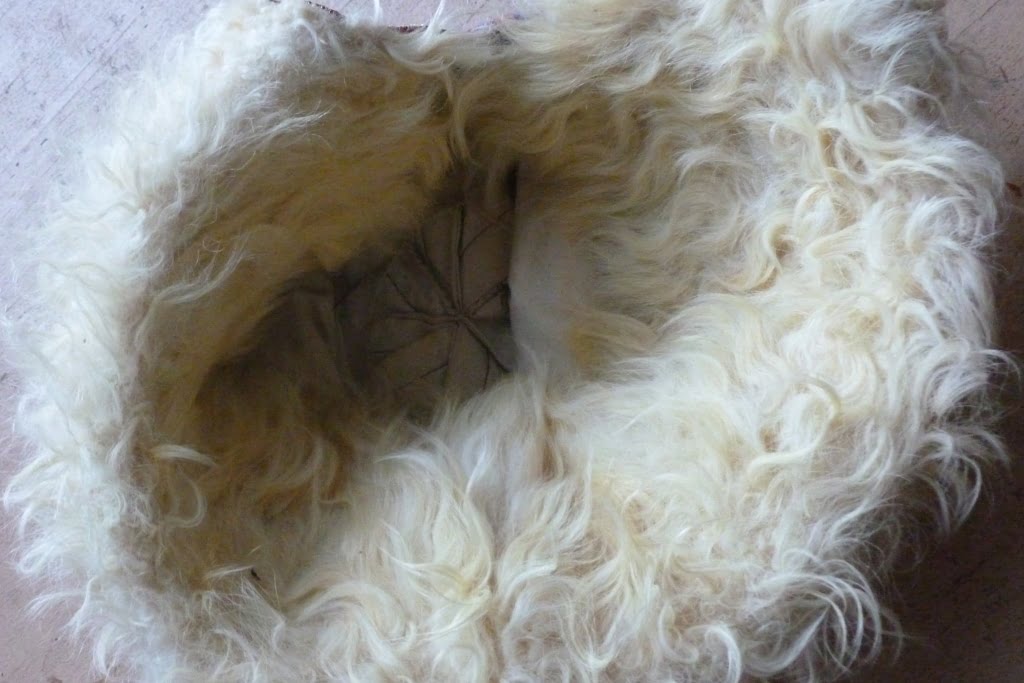
My hat may be overkill here in the Southern United States. It is made of heavy fabric, lined with a rather rough piece of sheepskin, not unlike what I’ve seen around my friend’s pastures. But, it is the warmest hat I have ever had, and probably ever will. Hopefully, if they have inherited my sense of fashion-risk, my children will wear it when I am done. It seems made to last.
I like to think of that Tibetan woman. I like to imagine her in a yak hair tent, children now grown but still nearby, maybe holding a grandchild on her knee, telling that chubby-cheeked child about the funny white lady who gave her so much money for her old hat that she bought shoes, socks, and new hats for the whole family. I hope she tells the story from her side with the same joy and relish that I feel on mine.
When the fur is folded back, the hat looks like an interesting variation on a Santa hat. It may be the most realistic and functional Santa hat I’ve ever seen. When I think of it that way, it stands to reason that our favorite Saint of the season may be a Tibetan. I can imagine that it could be a simple linguistic misunderstanding, mixing up the North Pole and the Roof of the World. Of course, flying yaks are a bit more of a stretch.
My sense of reality stretches and bends when I think of those tall mountains and long high plateaus. The stories I carry from that place need no contortions to be as colorful as my cap. And with this fuzzy hat on the roof of my head, this winter is a cozy companion, not a formidable foe.